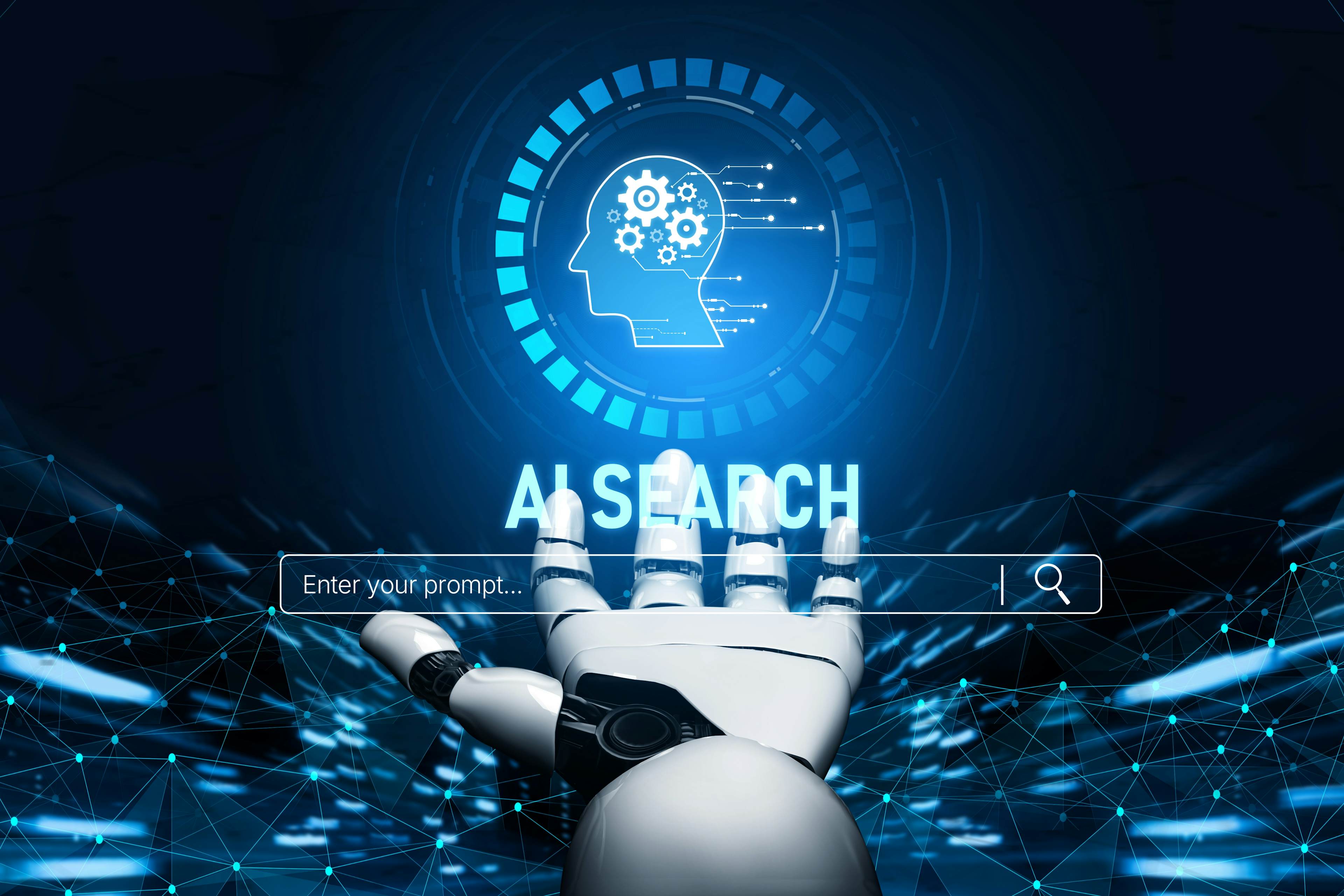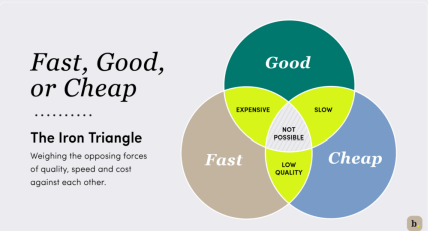6 Ways AI is Changing Work and How to Invest In It
The AI-Powered Shift from Manual Coding to Intent-Driven Creation — and What It Means for the Future of Work

The rise of “vibe coding” — using natural language and AI to build software without traditional coding — is part of a broader transformation in how work is done across industries. AI is accelerating cognitive tasks, enhancing creativity, and automating complex workflows, reshaping sectors like legal, finance, healthcare, and software development. For investors, the opportunity lies in backing AI-native companies that boost human potential and operate with unmatched speed, efficiency, and creativity.
Start Investing With the AI First Syndicate Today
< 3 minutes
Last October, over coffee with my managing partner Ray Wu, we were doing what investors often do: speculating on the AI horizon. Many of our predictions felt almost pedestrian by now, such as personalized learning agents, smaller LLMs, cheaper compute, a search-bar moment for ChatGPT. But somewhere in that conversation, I tossed out a half-joke: “Wouldn’t it be nice if we could just make apps without knowing how to code?” I’ve always envied builders who could turn an idea into a product with a few lines of code but I lack that hard skill.
We laughed. It felt far-fetched.
But a few months later, that passing joke transformed into a startling reality. What was once “haha” became “aha!” because suddenly, we’re seeing the rise of tools that let anyone build software simply by describing what they want in natural language. No Python, no JavaScript, no if-then logic trees… just intent expressed in words. This emerging phenomenon has a name: vibe coding.
This term was coined by Andrej Karpathy, a co-founder at OpenAI and former AI leader at Tesla. He introduced the phrase on X, describing a new style of programming where the developer relies almost entirely on large language models to generate code from natural language prompts, rather than writing the code manually.
Say you’re trying to build a website to buy and sell the latest Labubu dolls. Instead of learning to code or hiring a developer, you just talk to the AI. You tell it what the site is for (e-commerce), what vibe you’re going for (trendy, maybe a touch playful), and what features you want (a rotating image gallery? a “Buy Now” button?). Then it builds the whole thing for you. No code, no drag-and-drop widgets, just plain language and a bit of imagination.
Vibe coding is fundamentally reshaping the software engineering profession, creating both unprecedented opportunities for liberation from tedious tasks, and raising profound concerns about the future of developer expertise – “can we hire less but do more?”. This ponder is not exclusive to software engineers but to all of us working professionals. The future of worktech in the age of AI is going to be drastically different and the speed of change is unprecedented.
Why is this happening and who else will be affected? Let’s take a look at what AI is good at, and what that means for work:
At its core, artificial intelligence excels at pattern recognition and synthesis across vast datasets. This is a capability that mirrors some of humanity’s most valuable cognitive skills, but at unprecedented scale and speed. AI can ingest millions of documents, identify subtle correlations, and generate coherent outputs in seconds. It thrives on tasks that require consistent application of learned rules, rapid iteration, and the ability to process information without fatigue or bias drift.
This translates into three key strengths that are reshaping work:
- HomeThe acceleration of routine cognitive tasks
- HomeThe augmentation of creative processes
- HomeThe automation of complex but standardized workflows.
The Acceleration Layer
AI’s most immediate impact lies in dramatically speeding up tasks that previously consumed hours of human attention. Legal associates who once spent days reviewing contracts for specific clauses can now process hundreds of documents in minutes. Marketing teams can generate dozens of campaign variations, test messaging across demographics, and iterate on creative concepts at velocities that would have required entire agencies just five years ago.
This acceleration effect is particularly pronounced in knowledge work where the bottleneck has traditionally been human processing speed rather than access to information. Financial analysts can now synthesize earnings reports across entire sectors in real-time, while researchers can rapidly scan thousands of academic papers to identify emerging trends and research gaps.
The Creative Multiplier Effect
Perhaps more intriguingly, AI is proving adept at what we might call “structured creativity” — generating novel combinations within defined parameters. It can write compelling marketing copy that adheres to brand guidelines, suggest innovative product features based on user feedback patterns, or propose architectural solutions that balance multiple engineering constraints.
This capability is transforming roles that blend analytical thinking with creative output. Product managers can rapidly prototype user experiences, test multiple design philosophies, and iterate on complex features with AI as a creative partner. Content strategists can explore thousands of narrative approaches, while maintaining brand consistency and audience resonance.
The Workflow Automation Revolution
Where AI becomes truly transformative is in automating end-to-end workflows that previously required human orchestration. Customer service interactions that once demanded human empathy and problem-solving can now be handled by AI systems that understand context, access relevant databases, and execute complex multi-step resolutions.
This extends beyond simple chatbots to sophisticated systems that can manage entire business processes: AI can now handle procurement workflows, coordinate project timelines across teams, and even manage vendor relationships with minimal human oversight.
These capabilities create a clear taxonomy of work transformation. Routine cognitive tasks face direct replacement — data entry, basic analysis, initial document drafting, and preliminary research are increasingly becoming AI-first activities.
Start Investing With the AI First Syndicate Today
< 3 minutes
Six Industries in the Eye of the AI Storm
Here are six sectors where AI isn’t just augmenting work — it’s fundamentally redefining professional practice:
1. Customer Service
AI is revolutionizing customer support by handling complex, multi-turn conversations with contextual understanding that rivals human agents. Modern AI systems can access customer histories, troubleshoot technical issues, process returns, and even handle emotional situations with appropriate empathy. Companies report 40-60% reduction in human agent workload while maintaining higher customer satisfaction scores. However, personally I still try to skip the chatbots as I prefer to speak with a real person. Our portfolio company Toma is an example of Ai Customer Service — Toma builds personalized AI agents that automate customer communications and operational tasks for automotive dealerships. We participated in its Seed round in Spring 2024 and it recently closed its Series A led by a16z.

2. Legal Services
AI is transforming legal work through automated contract analysis, legal research, and document discovery. Systems can now review thousands of contracts for specific clauses, identify potential legal risks, and draft initial legal documents with remarkable accuracy. Large law firms report 50-80% time savings in document review processes. An example of a disruptive company would be Harvey AI, it specializes in legal AI, helping firms automate everything from contract analysis to brief writing, with major law firms like Allen & Overy becoming early adopters. In June 2025, it announced completion of its $300M Series E co-led by Kleiner Perkins and Coatue.

3. Software Engineering
In a recent episode of 20Product (a podcast) titled “How Duolingo Build Product 10x Faster with AI”, Cem Kansu, Chief Product Officer at Duolingo, offered a glimpse into how the language-learning giant is harnessing AI to build better. Leading product strategy for over 90 million monthly active learners, Kansu shared a striking example: a complete new course, once reliant on lengthy timelines and fully staffed engineering teams, was now conceived, prototyped, and shipped in just eight months, thanks to vibe coding.
Instead of marshaling an entire team to engineer a full prototype, Duolingo first leans into AI to rapidly generate a “vibe-coded” prototype — fast, functional, and evocative of the product’s core experience. When the prototype resonates, then and only then is it greenlit for full-scale engineering. According to Kansu, what would have previously required three times the headcount and twice the timeline was now achievable with a fraction of the resources. Our readers may have heard of Cursor, Windsurf, or GitHub Copilot. These are all examples of leading vibe-coding companies.

4. Financial Analysis
AI is automating fundamental analysis, risk assessment, and market research at unprecedented scale. It can analyze earnings reports across entire sectors, identify market anomalies, and generate investment recommendations based on complex data patterns. Investment firms using AI tools report 25-40% faster analysis times and improved accuracy in market predictions. Recently, Anthropic announced the launching of its Financial Analysis Solution that unifies the client’s data from internal data to market feed, enabling financial analysis that transforms how finance professionals analyze markets, conduct research, and make investment decisions.

5. Video Creation and Production
AI is transforming video production by automating editing, generating synthetic footage, and creating personalized video content at scale. Modern AI systems can produce professional-quality videos from text prompts, automatically edit raw footage with intelligent scene selection and pacing, and even generate realistic avatars for corporate communications. Video production times have been reduced from weeks to hours in many cases, with some platforms reporting 90% cost reductions for certain types of content creation. Alumni Ventures have invested in Higgsfield, launched as the “Canva for video,” using AI to allow users to create high quality videos easily from simple texts and images in minutes. Higgsfield places Hollywood-grade video production power directly into the hands of creators, marketers, and visionaries worldwide.

6. Healthcare Diagnostics
AI is enhancing diagnostic accuracy through medical imaging analysis, patient data interpretation, and treatment recommendation systems. It can detect patterns in X-rays, MRIs, and CT scans that human radiologists might miss, while analyzing patient histories to suggest optimal treatment protocols. Alumni Ventures portfolio company GC Therapeutics (while it is not an AI company) is using large language models to help identify the missing pieces of transcription factor that need to be fine tuned to get to the target cell type needed for cell therapeutics.

Investment Strategy in the Age of AI Transformation
The velocity of AI advancement demands a fundamentally different investment approach. We’re witnessing technological progress that compresses typical innovation cycles from years into months, creating both unprecedented opportunities and substantial execution risk. Founders are pioneering entirely new categories of work tools that solve problems we’re only beginning to understand.
Our investment thesis centers on identifying companies poised to break the traditional Iron Triangle constraint — the long-held principle that projects can only optimize for two of three variables: quality, speed, or cost. AI-native companies are demonstrating that they can deliver superior outcomes across all three dimensions simultaneously, fundamentally disrupting established competitive dynamics.

The current market environment bears striking resemblance to the 2021 NFT euphoria — AI applications are proliferating across every conceivable use case, creating significant signal-to-noise challenges for investors. Our framework cuts through this complexity by focusing on three critical differentiators:
Start Investing With the AI First Syndicate Today
< 3 minutes
AI-Core Architecture Over Feature Addition
We prioritize companies where artificial intelligence constitutes the foundational architecture, not a superficial enhancement to existing workflows. The most compelling opportunities emerge from founders who identify acute pain points and deliver comprehensive solutions through AI-first design. We avoid “AI-enabled tools” that simply digitize existing processes while leaving customers to orchestrate complex integrations.
True AI-native companies deliver finished outcomes: complete financial forecasts, comprehensive patent landscapes, or adjudicated insurance claims… all with minimal human intervention. They understand that customers want solutions, not components, and architect their platforms accordingly
Execution Velocity as Competitive Moat
The monthly cadence of AI model releases has fundamentally altered competitive dynamics. Market leadership now belongs to teams that can rapidly absorb breakthrough capabilities, integrate them into production systems, and deploy improvements within weeks rather than quarters. This demands organizational cultures built around continuous adaptation and technical experimentation.
The most successful teams demonstrate an almost obsessive commitment to speed — reconfiguring architectures overnight to leverage new models, rebuilding entire feature sets based on customer feedback, and maintaining development cycles that would have been impossible in traditional software environments
Operational Leverage Through AI-First Business Models
The most transformative AI companies practice what they preach, using artificial intelligence to automate not only customer workflows but their own operational infrastructure. These organizations achieve remarkable unit economics, reaching seven-figure recurring revenue with skeleton teams while maintaining superior service quality.
This operational leverage creates sustainable competitive advantages: lower customer acquisition costs, faster product iteration, and the ability to serve enterprise clients with startup-scale teams. Companies that scale on compute rather than headcount demonstrate both technical sophistication and business model innovation.
The question for investors isn’t whether AI will transform work — it’s which companies will harness this transformation most effectively, and how quickly the competitive landscape will shift as these capabilities become broadly accessible.
Closing Thought
The narrative around AI-powered work often gets trapped in dystopian predictions of mass white-collar unemployment, but the reality emerging from actual practice tells a fundamentally different story: one of human evolution rather than replacement. What we’re witnessing isn’t the obsolescence of knowledge workers but their transformation into something more inherently human: creative architects who work through intuition, iteration, and imagination rather than memorized processes and rigid methodology. Just as Generation Z developers are embracing “vibe coding”, knowledge workers across industries are discovering they can operate at the level of intention and strategy while AI handles the mechanical translation of ideas into deliverables.
This shift represents the most significant productivity revolution since the personal computer, but unlike previous technological disruptions that primarily automated manual labor, AI is automating cognition itself, the routine thinking that fills most professional workdays. The winners in this transformation won’t be the companies that replace human workers, but those that amplify human creativity, judgment, and strategic thinking. For investors, the opportunity lies not in betting against human capability, but in backing the tools that unlock human potential at unprecedented scale.
The future belongs to those who understand that the most powerful AI applications don’t eliminate the human element, they make it more essential than ever.
This communication is from Alumni Ventures, a for-profit venture capital company that is not affiliated with or endorsed by any school. It is not personalized advice, and AV only provides advice to its client funds. This communication is neither an offer to sell, nor a solicitation of an offer to purchase, any security. Such offers are made only pursuant to the formal offering documents for the fund(s) concerned, and describe significant risks and other material information that should be carefully considered before investing. For additional information, please see here. Example portfolio companies are provided for illustrative purposes only and are not necessarily indicative of any AV fund or the outcomes experienced by any investor. Example portfolio companies shown are not available to future investors, except potentially in the case of follow-on investments. Venture capital investing involves substantial risk, including risk of loss of all capital invested. This communication includes forward-looking statements, generally consisting of any statement pertaining to any issue other than historical fact, including without limitation predictions, financial projections, the anticipated results of the execution of any plan or strategy, the expectation or belief of the speaker, or other events or circumstances to exist in the future. Forward-looking statements are not representations of actual fact, depend on certain assumptions that may not be realized, and are not guaranteed to occur. Any forward-looking statements included in this communication speak only as of the date of the communication. AV and its affiliates disclaim any obligation to update, amend, or alter such forward-looking statements, whether due to subsequent events, new information, or otherwise.
Join Us (For Free)
Start Investing With the AI First Syndicate Today
- Home
Easy Sign-Up
Enroll in < 3 minutes. - Home
High-Quality Deals
Typically unavailable to individual investors. - Home
Co-Invest With Elite VCs
AV co-investors include VCs like Andreessen Horowitz, Sequoia, Khosla, Accel, and more. - Home
Exclusive Deal Information
Diligence materials, investor decks, company financials all provided. NDA required & enforced.